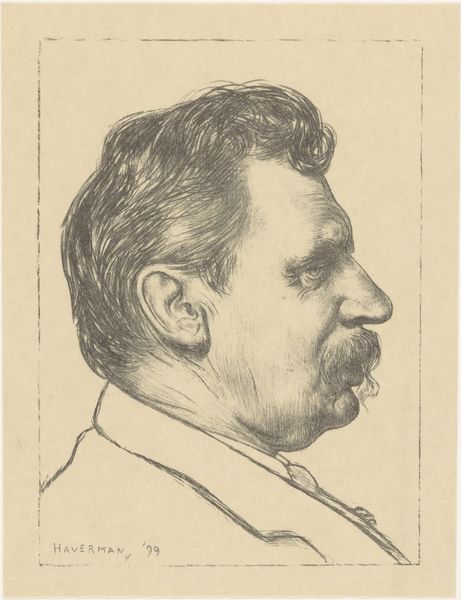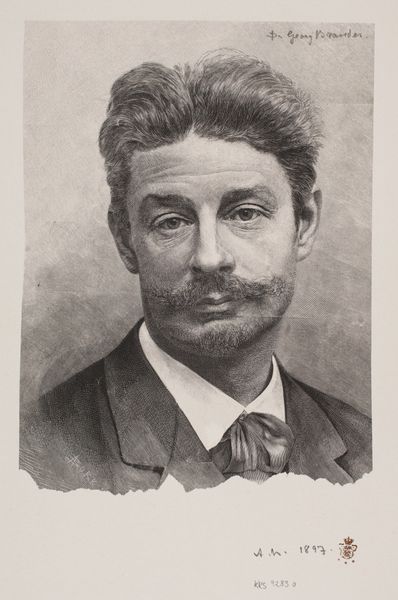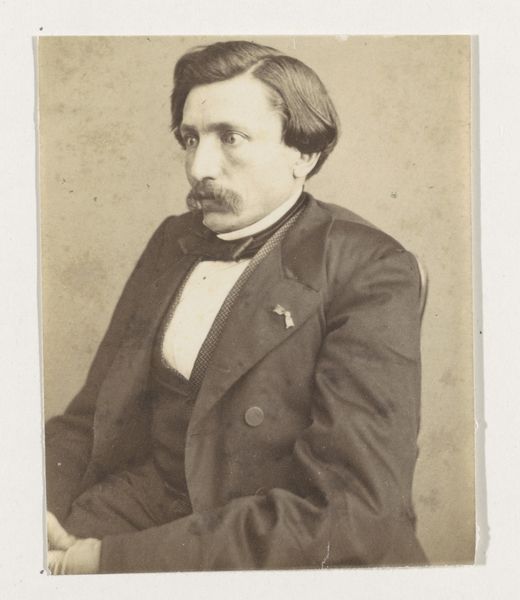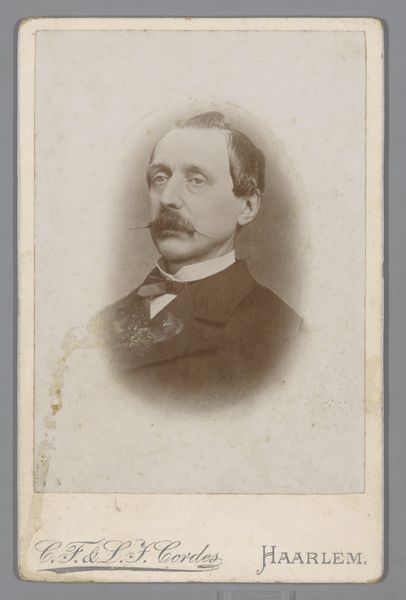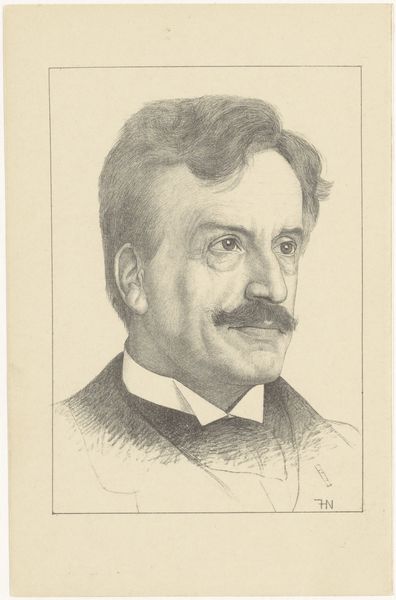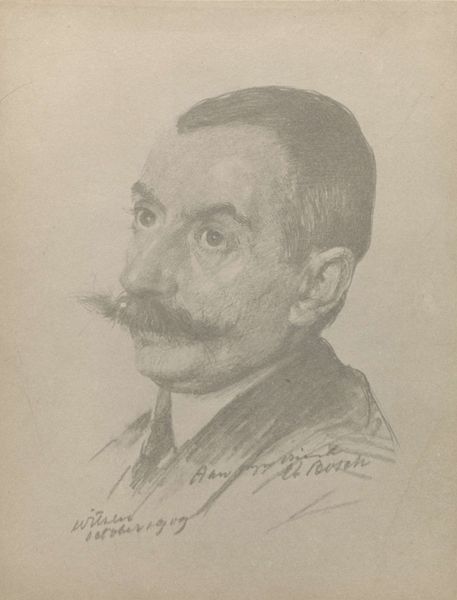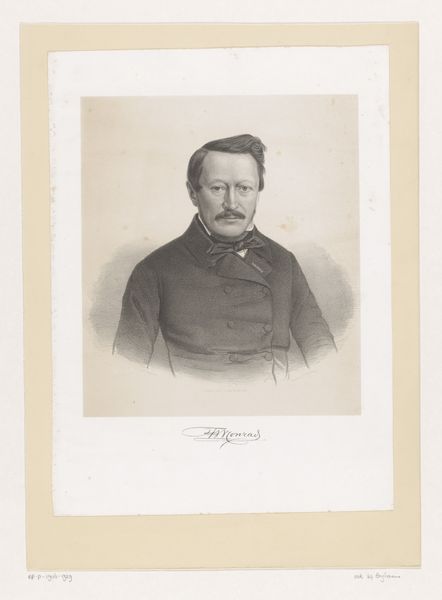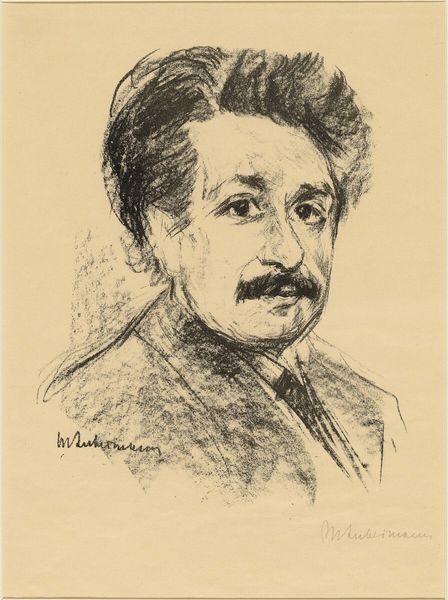
Copyright: Public domain US
Curator: Look at this compelling pencil drawing. It’s a portrait of Anton Azbe created in 1899 by Igor Grabar. What strikes you most when you first see it? Editor: A certain intellectual swagger, no? It's almost confrontational. The gaze is intense, and the monocle—what a statement. It reminds me of peering into the past and getting sized up in return! There's a performative aspect that's pretty striking to my eye. Curator: I agree. And consider Azbe’s prominent moustache and carefully styled hair; these are signifiers of identity and social positioning. They evoke that era’s sense of cultivated self-presentation. Editor: Totally, you can read the pencil strokes too; they’re frenetic and add a liveliness to his characterization, that you can almost sense the hand of Grabar giving Anton that lively persona. The lighting, stark as it is, somehow captures a fugitive, restless spirit. Curator: Exactly! And although this work falls under both realism and impressionism, its historical positioning grants insights into prevailing psychological fascinations during that era. Think about Freud's theories emerging, questioning identity, the surface and the substance, the external and the internal. Editor: Oh yes, that intellectual tempest is written all over it, right? It’s as though the sketch itself is caught between certainty and… unease. I get a definite sense of trying to solidify the man as an image against something less definite perhaps. The monocle appears more as a kind of shield than an aid. Curator: It truly is. Moreover, Azbe, being a drawing master, it seems reasonable to argue about possible underlying intentions for Grabar’s method and technique that allows us today to witness a double portrait in a way: a picture of a person as well as a glimpse into the creative decisions which went behind portraying him. Editor: Precisely! It speaks of capturing both likeness and, perhaps, longing or maybe the uncertainty of legacy itself! After delving into the symbolism embedded within the pencil strokes, the artwork evolves into a silent narrator—its meaning forever unfixed yet endlessly resonating through the ages.
Comments
No comments
Be the first to comment and join the conversation on the ultimate creative platform.
